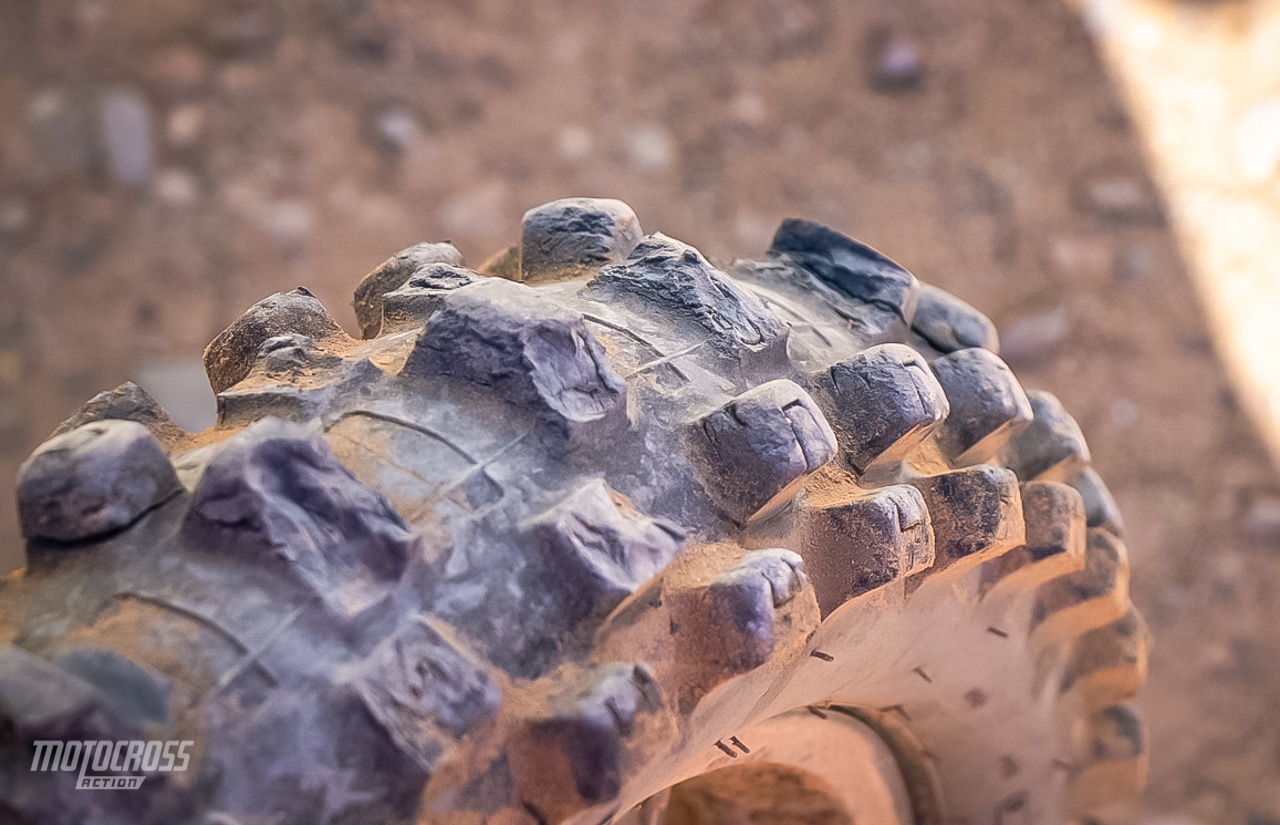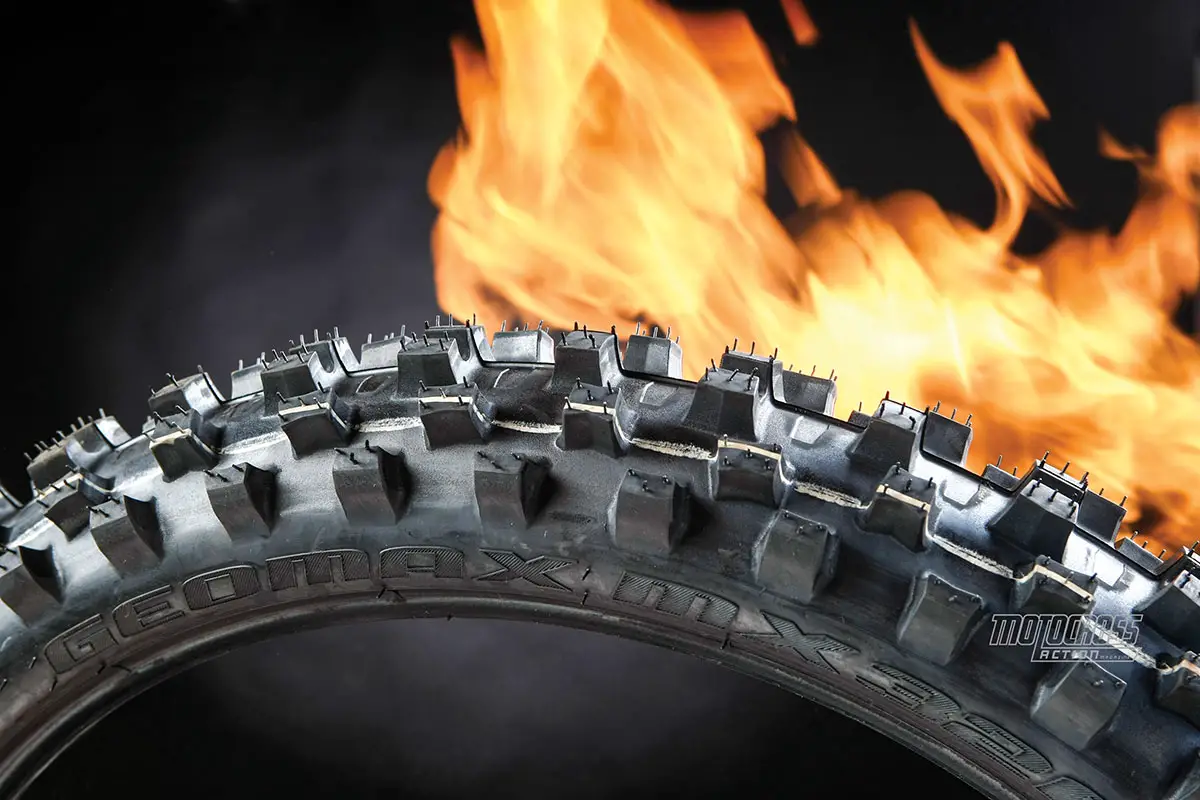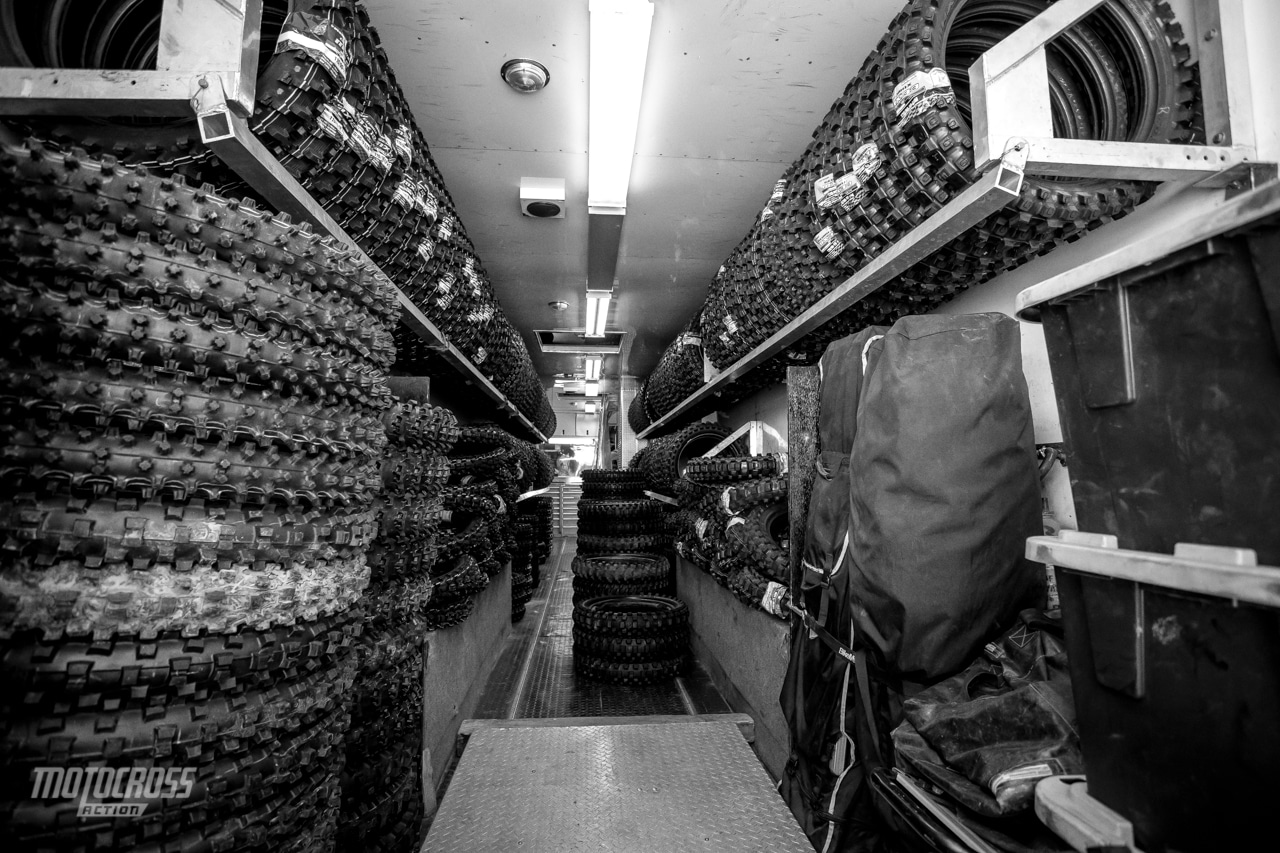ASK THE MXPERTS: ALBERT F. SHORE WAS A MOTOCROSS TIRE GENIUS
Dear MXA,
I’m interested in how tires work on different types of terrain. At my local track the dirt is hard, but almost everyone runs Dunlop MX33s or MX3S tires. It is my understanding that these are intermediate-terrain tires. How can they run intermediate tires on hard dirt? What makes them intermediates when they look just like any other tire?
Tires are marketed in hard-, intermediate- or soft-terrain varieties. But, this isn’t a hard-and-fast rule. There is considerable overlap in how far up into intermediate terrain a hard-pack tire can go and how far down into hard terrain an intermediate tire can go. How can that be? The rubber in a tire is rated in something called “durometers.” A durometer is a measure of the hardness of cured rubber. Hardness has an effect on how the rubber grips, how it resists flexing and how long a tire built from it will wear. A tire’s hardness is checked by using a durometer gauge, which has a needle point that penetrates the rubber and reads its hardness on a dial. The durometer gauge is named after instrument maker Albert F. Shore. There are several different scales of durometer used for materials with different properties. The two most common scales are the Shore Type A scale for softer compounds and the Shore Type D scale for harder plastics. Motocross tires are measured using the Shore Type A durometer and given a number ranking that represents their position on a scale from soft to hard. The higher the durometer number the harder the rubber compound.
 This is what an intermediate tire looks like after a two-hour cross-country race on hard-packed dirt.
This is what an intermediate tire looks like after a two-hour cross-country race on hard-packed dirt.
Hard-compound rubber registers 70 to 80 durometers. Soft-compound rubber reads in the 60 to 70 range. Anything less than 60 durometers (a very soft rubber compound) would be too flexible to use in motocross knobs. As a rule of thumb, softer rubber compounds are heavier because they contain more oil in their formula. Soft-compound tires can weigh as much as 1 pound more per tire (for an equal amount of rubber). But don’t be fooled by durometer readings. Just because a tire’s rubber is 60 durometers on paper doesn’t mean it will consistently measure at 60 durometers. The knobs could read between a 58 and 62 range, which is considered acceptable quality control. For the best overall tire performance, the durometer readings of a cold tire and a hot tire should remain as close to the original durometer number as possible.
As you have found out at your local track, intermediate tires will work on hard terrain. Why? Because intermediate tires use the same rubber hardness as hard terrain tires (a durometer reading in the 60 to 70 range). So from a purely rubber point of view, they are the same tire; however, hard and intermediate tires have different tread patterns, knob spacing and knob heights.
Rubber compounds can affect tire pressure as the heat builds up in a tire. The classic example of this is with soft-compound tires. Because soft rubber has more adhesion with the dirt, it generates more heat. Heat causes the tire’s air pressure to increase. Hardpack tires can heat up as much as 4 pounds in a long moto. The pressure starts to build up on lap two. In this situation, it’s common to drop the starting tire pressure by 1 to 2 pounds (in an effort to reach a compromise air pressure setting for the majority of the race).
As for the MXA wrecking crew, we typically run a Dunlop MX33 OR MX34 combination, even though we are often faced with both hard-pack sections and sandy sections of track, and intermediate is a good compromise. It can use its taller knobs to hook up in the loose sections and its soft durometer rating to grip on hard dirt. It isn’t the perfect tire, but it bridges the widest gap of terrain. When we can find them we run the older MX3S front tire instead of the MX33 or MX34, but the MX3S can chunk knobs if it is run on hard-pack dirt. We are willing to risk it because we prefer its feel over the non-knobby-throwing MX33.







Comments are closed.